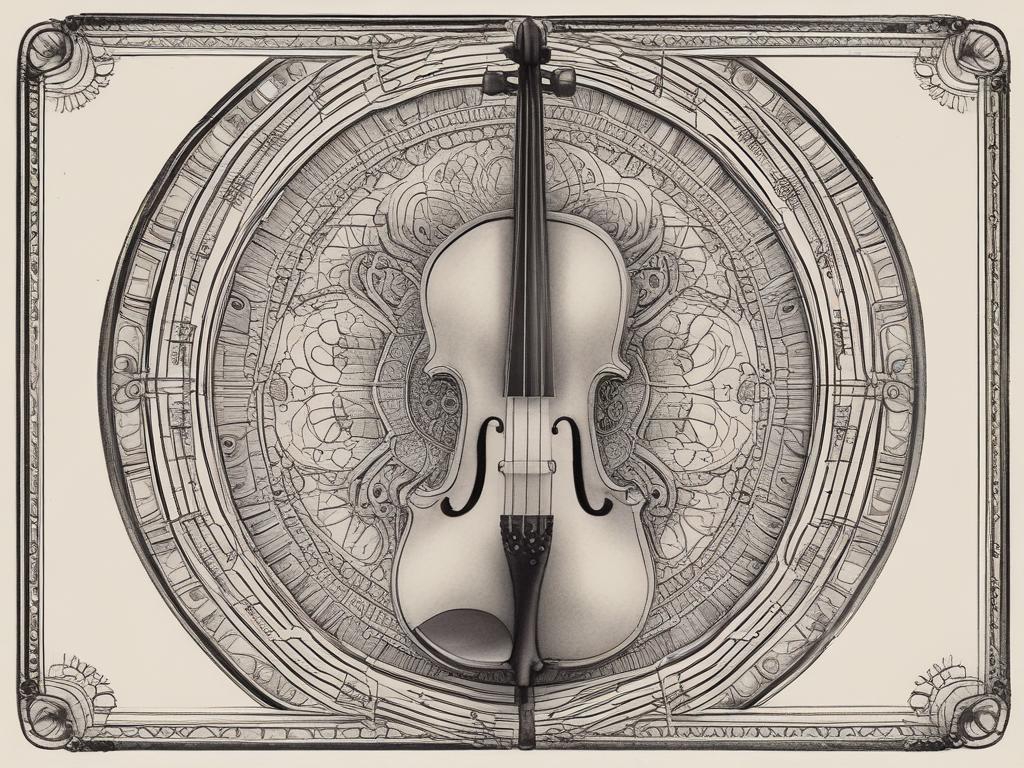Cymatics, derived from the Greek word “kyma,” meaning “wave,” is a mesmerizing field of study that explores the relationship between sound and physical form. At its core, cymatics investigates how sound vibrations can influence the behavior of matter, creating visually stunning patterns and shapes in various media. This fascinating intersection of art, science, and nature has captivated researchers, artists, and enthusiasts alike, revealing profound insights into the nature of sound and its impact on the physical world.
The origins of cymatics can be traced back to the 18th century when the German scientist Ernst Chladni began to experiment with sound vibrations. Chladni is often referred to as the “father of acoustics” for his pioneering work in visualizing sound. He created a series of experiments using metal plates covered with sand and a violin bow. When the plates were vibrated, the sand would move and settle into intricate patterns that corresponded to the frequencies produced. These “Chladni figures” laid the groundwork for future explorations into the visual representation of sound.
In the 20th century, the field gained further traction, particularly through the work of Swiss scientist Hans Jenny. Jenny expanded on Chladni’s experiments, developing what he called “cymatics.” He used liquids, powders, and various shapes of containers to illustrate how sound waves could create complex patterns. His work not only highlighted the beauty of sound-induced patterns but also suggested that sound could be a medium for communication and transformation, a concept that resonated deeply with both artistic and scientific communities.
The Science Behind Cymatics
Cymatics is fundamentally rooted in physics, particularly the study of wave phenomena. Sound travels in waves, and when these waves interact with matter, they can induce vibrations. These vibrations can be observed in different states of matter, including solids, liquids, and gases.
When sound waves hit a surface, they can create standing waves, which are stationary wave patterns formed by the interference of two waves traveling in opposite directions. These standing waves lead to areas of constructive interference (where waves amplify each other) and destructive interference (where waves cancel each other out). The result is a pattern that visually represents the frequency and amplitude of the sound.
The choice of medium also plays a crucial role in cymatics. For example, sand on a plate can create intricate patterns at lower frequencies, while liquid in a container can produce mesmerizing shapes that change dynamically with varying frequencies. The shapes formed can range from simple geometric patterns to complex, organic designs, revealing the underlying order and structure inherent in sound.
Cymatics in Art and Therapy
Beyond its scientific implications, cymatics has also found a prominent place in the world of art and therapy. Artists have embraced cymatic principles to create stunning visual displays that capture the essence of sound. Using various techniques, they transform sound waves into tangible artworks, often employing technology to amplify and visualize the effects in real-time.
Moreover, cymatics has been explored in therapeutic contexts, with practitioners investigating how sound can influence mental and emotional states. Sound therapy, which utilizes specific frequencies to promote relaxation and healing, has gained popularity in holistic health practices. Proponents believe that certain sound frequencies can resonate with the body’s own energy fields, leading to positive changes in physical and mental well-being.
The Future of Cymatics
The future of cymatics holds exciting possibilities as technology continues to advance. With the development of sophisticated sound visualization tools and software, researchers can now analyze and manipulate sound waves in ways previously unimaginable. This opens up new avenues for exploration, from understanding the fundamental principles of acoustics to potentially unlocking new forms of communication and expression.
In addition to scientific research, the integration of cymatics into education can inspire a new generation to appreciate the beauty and complexity of the natural world. By bridging the gap between science and art, cymatics encourages curiosity and creativity, fostering a deeper understanding of how sound shapes our reality.
Conclusion
The world of cymatics is a captivating realm where sound transforms into visual beauty, revealing the intricate connections between vibration, matter, and perception. As we continue to explore this fascinating field, we uncover not only the science behind sound but also its profound implications for art, therapy, and our understanding of the universe. Whether viewed as a scientific phenomenon or an artistic exploration, cymatics invites us to listen closely to the world around us and appreciate the hidden patterns that resonate within it.




